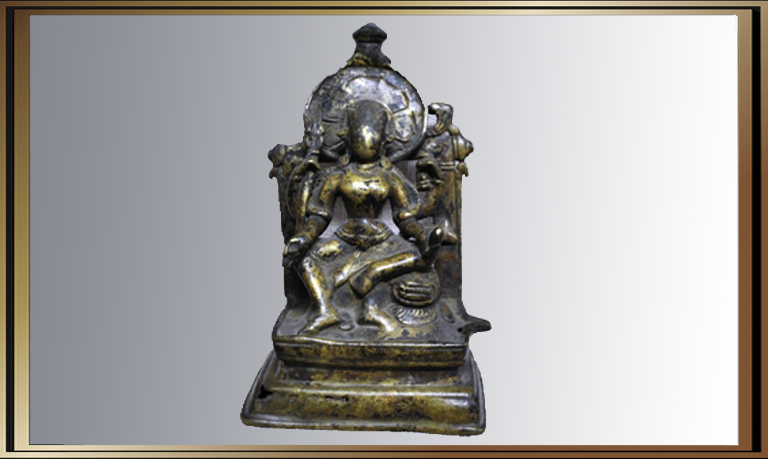Bronze Gallery
Bronze Gallery
Large images of both Brahmanical and Buddhist of gold, silver and metals must have existed all over North West Himalayas but they were the first to attract the attention of iconoclasts. None of them have survived and this imparts an interest of the scholars to the brazen idols of Himachal Pradesh which survive in its far off areas like Bhimakali, Hatkoti, Bharmour and Chatrari etc. The collection of the museum though comprising small bronzes retains the excellence and classism of life size images still enshrined in those temples. Many of images were casted in the ancient method of cire-perdu or the lost wax process and are of ashtadhatu. The bronzes of Himachal can be divided into two groups: One classical and the other a later tradition in folk which evolved from the first. The classical phase seems to have lasted upto 12th-13th century and show the influence of Pratihara, Kashmiri and Katyuri workmanship. The image of folk style show angular anatomies, large over proportionate heads with almond shaped eyes resting on week torsos and on ribbed necks without any regard to econometric.
Bronze Gallery
The images of Mahishasurmardini seem to outnumber in the folk bronzes and so often show Durga wearing a village skirt while the lion and buffalo are reduced to diminutive sizes. Buddha images of the collection are from the bordering territory of Himachal Pradesh which lies close to western Tibet like Rampur Bushair where Vajrayana sect of Buddhism prevailed. The bronzes of bordering territories as well as of Western Tibbet are characterized by three pointed crowns, broad and plain nimbus and by the presence of streamers draped around the necks. It appears that the Buddhism of 10th -11th centuries in Western Tibet had to depend upon the artisans of Himachal and Kashmir as it had no artistic activity or experienced craftsmen of its own.
The mohras or the masks are of local character and simplified versions of Shiva and Parvati and other local deities called deotas such as devis, rishis and nagas etc. The older type of such icons consists only of a face with smiling lips, prominent eyes, pointed bird like nose and an indrawn and stylized chest. The mohras which date before 17th century are almost all cast whereas later they were made of embossed sheets of copper, silver or even gold.





